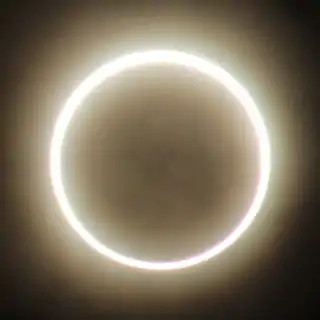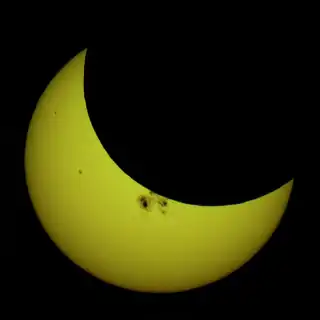| Solar eclipse of October 24, 2098 | |
|---|---|
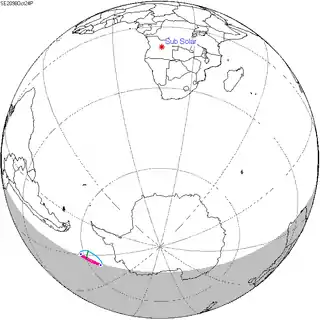 Map | |
| Type of eclipse | |
| Nature | Partial |
| Gamma | −1.5407 |
| Magnitude | 0.0056 |
| Maximum eclipse | |
| Coordinates | 61°48′S 95°30′W / 61.8°S 95.5°W |
| Times (UTC) | |
| Greatest eclipse | 10:36:11 |
| References | |
| Saros | 164 (1 of 80) |
| Catalog # (SE5000) | 9730 |
A partial solar eclipse will occur on October 24, 2098. A solar eclipse occurs when the Moon passes between Earth and the Sun, thereby totally or partly obscuring the image of the Sun for a viewer on Earth. A partial solar eclipse occurs in the polar regions of the Earth when the center of the Moon's shadow misses the Earth.
This minor eclipse is the first solar eclipse of Saros cycle 164. It is the shallowest solar eclipse of the 21st century; at best, in a remote location within the Southern Ocean the moon will block out 0.56% of the sun's diameter with the sun barely above the horizon. Gamma is equal to −1.5407, which is also farther from zero than any other solar eclipse in the century. The eclipse is not listed by some sources.[1]
There will not be a shallower partial eclipse until August 23, 2883.
Related eclipses
Solar eclipses 2094–2098
This eclipse is a member of a semester series. An eclipse in a semester series of solar eclipses repeats approximately every 177 days and 4 hours (a semester) at alternating nodes of the Moon's orbit.[2]
| 119 | June 13, 2094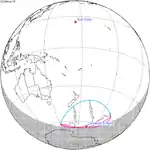 Partial |
124 | December 7, 2094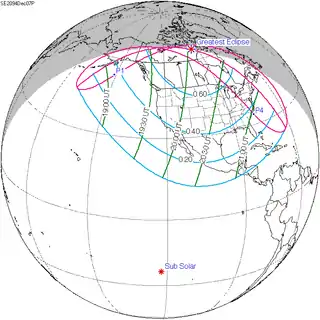 Partial |
| 129 | June 2, 2095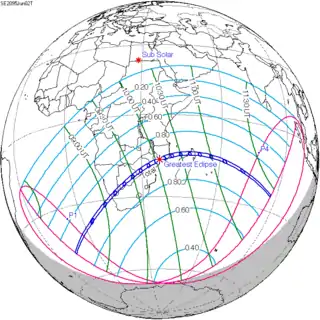 Total |
134 | November 27, 2095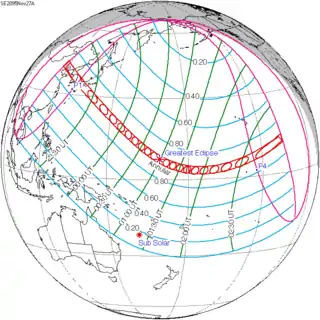 Annular |
| 139 | May 22, 2096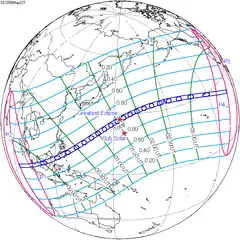 Total |
144 | November 15, 2096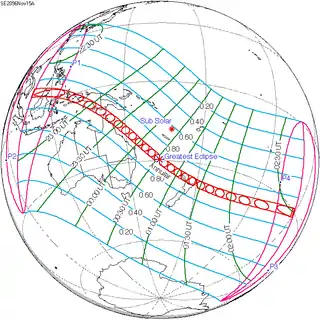 Annular |
| 149 | May 11, 2097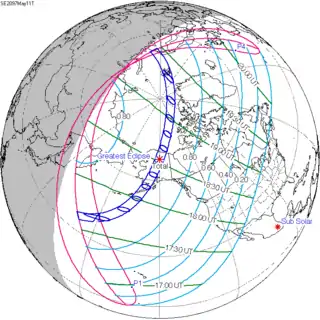 Total |
154 | November 4, 2097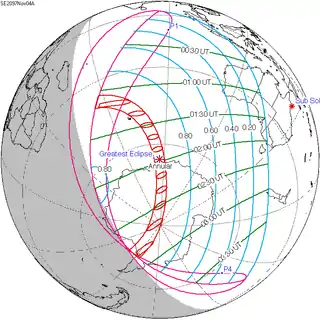 Annular |
| 164 | October 24, 2098 Partial |
References
- ↑ "Solar and Lunar Eclipses Worldwide – 2098". www.timeanddate.com. Retrieved 2023-12-15.
- ↑ van Gent, R.H. "Solar- and Lunar-Eclipse Predictions from Antiquity to the Present". A Catalogue of Eclipse Cycles. Utrecht University. Retrieved 6 October 2018.
.jpg.webp)
